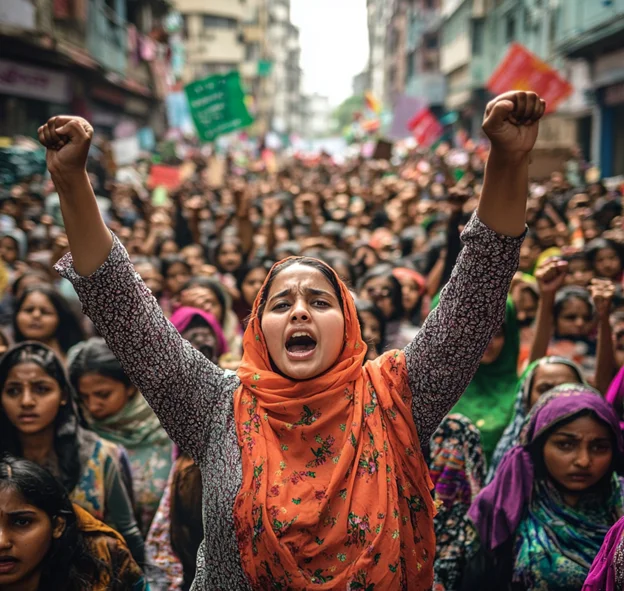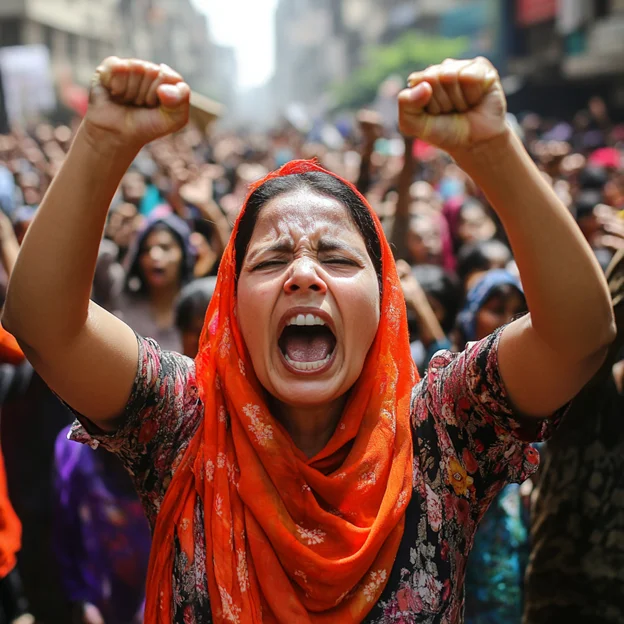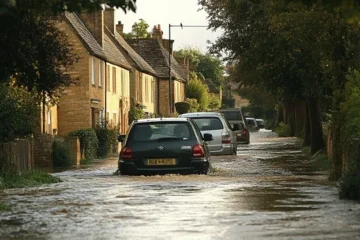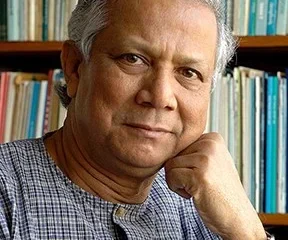The 15-year tenure of Prime Minister MS Hasina ended in Bangladesh. The youth’s struggle brought about a change in Bangladesh’s politics. MS Hasina, known as the “Iron lady” in Bangladesh, assumed power as Prime Minister in 2009, but the young protestors have transformed the worldview and seized rights from the government. The nations came at one point, and their basic rights were affected, so such types of movements never fail. The youth’s unity in Bangladesh changed the country’s scene, and now they are celebrating real freedom.

The Game Change in Bangladesh
The game began with the discarded job quotes that initially sparked the protest. As the police killed 300 students on Sunday, the situation deteriorated further. This was the most devastating single-day casualty incident in Bangladesh’s history. The actions of MS Hasina, the Prime Minister of Bangladesh, heightened the level of aggression among the people.
The curfew situation could not overcome the anger, aggression, and hatred towards Bangladesh’s government. This large crowd provides an opportunity for the army to reflect on the current state of affairs in the country. The junior officers have already discussed the political situation in Bangladesh and the protestors’ attitude towards their demands, and they have agreed that the interim government should take control of the situation for the betterment of the country.
Here’s the key point: India’s supported for Bangladesh’s freedom and independence. In any situation along the MS Hasina, but the graph of popularity has become down, and India was not paying too much attention to the Bangladesh government, which was under MS Hasina’s control. It was the possibility that MS Hasina had changed her mind to live in England rather than India.
MS Hasina Politics and Bangladesh
Under Sheikh Mujibur Rahman’s supervision, the freedom fighters played a significant role. Sheikh Mujibur Rahman’s daughter was the longest-serving head of state in Bangladesh. She and her sister witnessed her father’s assassination in 1975. In 1981, she returned to Bangladesh and joined politics for real democracy. She was elected in 1996. She played an opposition role until 2008, then came back into power in 2009 and until 2024. During her role as head of state, she forced disappearances, extrajudicial killings, and the crushing of opposition figures and her critics; she denied the charges, and her government often accused the main opposition parties of fueling protests.
The genuine conflict began when the opposition failed to participate in the January 2024 election. However, the protests by young students wreak havoc for MS Hasina, putting power politics in the hands of the people. As a leader, you can use force to reach the next level, but this time the consequences beyond her thinking and mocking of the young put her in the darkness, where her comeback may be the dream of her life.
In the last 20 years, MS Hasina’s policies have lifted 25 million people out of poverty in Bangladesh. There has been significant growth in the garment industry, the supply of garment products, and exports to various global regions, particularly Europe, North America, and Asia. MS Hasina oversees the completion of infrastructure projects in various areas, with the Padma Bridge across the Ganges serving as a prime example.

Don’t Let Down Bangladesh MS Hasina
In the controversial 2024 election, she called the protesters terrorists. She imprisoned and prosecuted the undocumented individuals. Following the pandemic, the cost of living posed a significant challenge for the Bangladeshi people. In 2016, the foreign debt played a significant role, leading to violations of basic human rights, harassment of journalists, the disappearance of 600 individuals, and the abuse of power against other political parties. In 2021, the US sanctioned the Rapid Action Battalion, a notorious elite unit of the police accused of carrying out brutal extrajudicial killings, citing human rights violations.
There are the few examples of the young protestors change
- Egypt (2011) – The Arab Spring revolution was led by young Egyptians who demanded democratic reforms and ousted President Hosni Mubarak.
- Tunisia (2011) – Youth-led protests led to the overthrow of President Zine El Abidine Ben Ali, sparking the Arab Spring.
- South Africa (1976) – The Soweto Uprising, led by students, marked a turning point in the fight against apartheid.
- Czechoslovakia (1989) – The Velvet Revolution, led by students and young dissidents, brought an end to communist rule.
- Serbia (2000) – The Otpor movement, led by young people, helped overthrow President Slobodan Milošević.
- Ukraine (2014) – The Euromaidan protests, led by young Ukrainians, led to the ousting of President Viktor Yanukovych.
- Hong Kong (2014) – The Umbrella Revolution, led by young activists, demanded democratic reforms.
- Sudan (2019) – Youth-led protests led to the overthrow of President Omar al-Bashir.
- Chile (2019) – Student-led protests sparked a wider movement demanding social and economic reforms.
- Myanmar (2021) – Young people played a key role in the protests against the military coup.
This article focuses on Bangladesh, where the role of young protestors has significantly transformed the country’s political landscape. This is a well-crafted poem that captures the essence of the third-world nations that I particularly admire, and I am sharing it with my readers.
Patriot into Traitor
By Robert Browning
It was roses, roses, all the way,
With myrtle mixed in my path like mad:
The house-roofs seemed to heave and sway,
The church-spires flames, such flags they had,
A year ago on this very day.
The air broke into a mist with bells,
The old walls rocked with the crowd and cries.
Had I said, “Good fold, mere noise repels–
But give me your sun from yonder skies!”
They had answered, “And afterward, what else?”
Alack, it was I who leaped at the sun
To give it my loving friends to keep!
Nought man could do, have I left undone:
And you see my harvest, what I reap
This very day, now a year is run.
There’s nobody on the house-tops now–
Just a palsied few at the windows set;
For the best of the sight is, all allow,
At the Shambles’ Gate– or, better yet,
By the very scaffold’s foot. I trow.
I go in the rain, and more than needs,
A rope cuts both my writs behind;
And think, by the feel, my forehead bleeds,
For they fling, whoever has a mind,
Stones at me for my year’s misdeeds.
Thus I entered, and thus I go!
In triumphs, people have dropped down dead.
“Paid by the world, what dost thou owe
Me?”– God might question; now instead,
‘Tis God shall repay: I am safer so.
Dr. Abid Hussain Nawaz




true reflection of the wisdom
the true picture of the country